#Angular application server-side rendering
Explore tagged Tumblr posts
Text
#Angular advanced navigation control#Angular application server-side rendering#Angular component structure#Angular Dependency Injection#Angular form validation techniques#Angular UI component library#angular web development company#best angular development company#hire dedicated angular developer#Hire nearshore angular developer#top angular development company
0 notes
Text
The Future of Web Development: Trends, Techniques, and Tools
Web development is a dynamic field that is continually evolving to meet the demands of an increasingly digital world. With businesses relying more on online presence and user experience becoming a priority, web developers must stay abreast of the latest trends, technologies, and best practices. In this blog, we’ll delve into the current landscape of web development, explore emerging trends and tools, and discuss best practices to ensure successful web projects.
Understanding Web Development
Web development involves the creation and maintenance of websites and web applications. It encompasses a variety of tasks, including front-end development (what users see and interact with) and back-end development (the server-side that powers the application). A successful web project requires a blend of design, programming, and usability skills, with a focus on delivering a seamless user experience.
Key Trends in Web Development
Progressive Web Apps (PWAs): PWAs are web applications that provide a native app-like experience within the browser. They offer benefits like offline access, push notifications, and fast loading times. By leveraging modern web capabilities, PWAs enhance user engagement and can lead to higher conversion rates.
Single Page Applications (SPAs): SPAs load a single HTML page and dynamically update content as users interact with the app. This approach reduces page load times and provides a smoother experience. Frameworks like React, Angular, and Vue.js have made developing SPAs easier, allowing developers to create responsive and efficient applications.
Responsive Web Design: With the increasing use of mobile devices, responsive design has become essential. Websites must adapt to various screen sizes and orientations to ensure a consistent user experience. CSS frameworks like Bootstrap and Foundation help developers create fluid, responsive layouts quickly.
Voice Search Optimization: As voice-activated devices like Amazon Alexa and Google Home gain popularity, optimizing websites for voice search is crucial. This involves focusing on natural language processing and long-tail keywords, as users tend to speak in full sentences rather than typing short phrases.
Artificial Intelligence (AI) and Machine Learning: AI is transforming web development by enabling personalized user experiences and smarter applications. Chatbots, for instance, can provide instant customer support, while AI-driven analytics tools help developers understand user behavior and optimize websites accordingly.
Emerging Technologies in Web Development
JAMstack Architecture: JAMstack (JavaScript, APIs, Markup) is a modern web development architecture that decouples the front end from the back end. This approach enhances performance, security, and scalability by serving static content and fetching dynamic content through APIs.
WebAssembly (Wasm): WebAssembly allows developers to run high-performance code on the web. It opens the door for languages like C, C++, and Rust to be used for web applications, enabling complex computations and graphics rendering that were previously difficult to achieve in a browser.
Serverless Computing: Serverless architecture allows developers to build and run applications without managing server infrastructure. Platforms like AWS Lambda and Azure Functions enable developers to focus on writing code while the cloud provider handles scaling and maintenance, resulting in more efficient workflows.
Static Site Generators (SSGs): SSGs like Gatsby and Next.js allow developers to build fast and secure static websites. By pre-rendering pages at build time, SSGs improve performance and enhance SEO, making them ideal for blogs, portfolios, and documentation sites.
API-First Development: This approach prioritizes building APIs before developing the front end. API-first development ensures that various components of an application can communicate effectively and allows for easier integration with third-party services.
Best Practices for Successful Web Development
Focus on User Experience (UX): Prioritizing user experience is essential for any web project. Conduct user research to understand your audience's needs, create wireframes, and test prototypes to ensure your design is intuitive and engaging.
Emphasize Accessibility: Making your website accessible to all users, including those with disabilities, is a fundamental aspect of web development. Adhere to the Web Content Accessibility Guidelines (WCAG) by using semantic HTML, providing alt text for images, and ensuring keyboard navigation is possible.
Optimize Performance: Website performance significantly impacts user satisfaction and SEO. Optimize images, minify CSS and JavaScript, and leverage browser caching to ensure fast loading times. Tools like Google PageSpeed Insights can help identify areas for improvement.
Implement Security Best Practices: Security is paramount in web development. Use HTTPS to encrypt data, implement secure authentication methods, and validate user input to protect against vulnerabilities. Regularly update dependencies to guard against known exploits.
Stay Current with Technology: The web development landscape is constantly changing. Stay informed about the latest trends, tools, and technologies by participating in online courses, attending webinars, and engaging with the developer community. Continuous learning is crucial to maintaining relevance in this field.
Essential Tools for Web Development
Version Control Systems: Git is an essential tool for managing code changes and collaboration among developers. Platforms like GitHub and GitLab facilitate version control and provide features for issue tracking and code reviews.
Development Frameworks: Frameworks like React, Angular, and Vue.js streamline the development process by providing pre-built components and structures. For back-end development, frameworks like Express.js and Django can speed up the creation of server-side applications.
Content Management Systems (CMS): CMS platforms like WordPress, Joomla, and Drupal enable developers to create and manage websites easily. They offer flexibility and scalability, making it simple to update content without requiring extensive coding knowledge.
Design Tools: Tools like Figma, Sketch, and Adobe XD help designers create user interfaces and prototypes. These tools facilitate collaboration between designers and developers, ensuring that the final product aligns with the initial vision.
Analytics and Monitoring Tools: Google Analytics, Hotjar, and other analytics tools provide insights into user behavior, allowing developers to assess the effectiveness of their websites. Monitoring tools can alert developers to issues such as downtime or performance degradation.
Conclusion
Web development is a rapidly evolving field that requires a blend of creativity, technical skills, and a user-centric approach. By understanding the latest trends and technologies, adhering to best practices, and leveraging essential tools, developers can create engaging and effective web experiences. As we look to the future, those who embrace innovation and prioritize user experience will be best positioned for success in the competitive world of web development. Whether you are a seasoned developer or just starting, staying informed and adaptable is key to thriving in this dynamic landscape.
more about details :- https://fabvancesolutions.com/
#fabvancesolutions#digitalagency#digitalmarketingservices#graphic design#startup#ecommerce#branding#marketing#digitalstrategy#googleimagesmarketing
2 notes
·
View notes
Text
Frontend Technologies (React.js and Angular.js)
Ever since the advent of the world wide web, technologies have been researched and created to streamline the creation of Web pages that are displayed to a client upon the client's request. These web pages began by being static and non-interactive with the use of basic HTML and CSS. After awhile, the Javascript programming language stormed the world of web applications and brought a layer of interactivity, finesse, and dynamism to web applications. Since then, more technologies, most of which are built on the basic initial technologies, have come out. Two of the most popular and effective technologies are React.js and Angular.js. In this article, an attempt would be made to highlight the differences in these technologies and what makes them unique and powerful.
Firstly, React.js is built on Javascript and produced and managed by Meta while Angular is also built on TypeScript but it was produced and managed by Google.
React is a Javascript library while Angular is a framework.
React makes use of a "templating langauge" called JSX to extend Javascript into HTML and it is rendered in the server side while Angular extends the functionality of HTML by adding more attributes like "ng-bind" and it is client side rendered.
React works by using a virtual DOM, while Angular uses the real DOM.
React is a highly scalable library because of the reusability of its components while Angular is less Highly scalable.
Having itemised these differences, they each have their strengths and what makes developers prefer one over the other. React has support for mobile App development, reusability and predictability of code, one can learn it really fast Etc. Angular has faster server side rendering, fewer lines of code, takes time to learn, Etc.
I specifically prefer React to Angular which is why I am glad that React is being used in the HNG internship https://hng.tech/internship where I am currently interning. I have used React to build highly interactive web applications and look forward to honing my skills better as I use it for more daunting projects in the HNG internship. Check out HNG on their website https://hng.tech/premium
2 notes
·
View notes
Text
Top 20 Backend Development Tools In 2023
Backend development plays a crucial role in the operation and performance optimisation of web and mobile applications, serving as their foundational framework. In the context of the dynamic technological environment, it is imperative for developers to remain abreast of the most recent and effective backend development technologies. In the year 2023, a plethora of advanced tools have surfaced, leading to a significant transformation in the approach to backend development. Reach out to Nivida Web Solutions - a noted Web development company in Vadodara and let's craft a website that sets you apart.
This analysis aims to examine the leading 20 backend development tools projected for the year 2023, which possess the potential to optimise operational effectiveness, raise work output, and achieve exceptional outcomes.
1. Node.js:
Node.js continues to be a prominent contender in the realm of backend development, offering a resilient framework for constructing scalable, server-side applications through the utilisation of JavaScript. The asynchronous and event-driven nature of the system renders it highly suitable for real-time applications and microservices.
2. Express.js:
Express.js is a Node.js framework that offers a basic and flexible approach to backend development. It achieves this by providing streamlined routing, efficient handling of HTTP requests, and effective management of middleware. The software possesses a high degree of extensibility, allowing developers to create tailored solutions.
3. Django:
Django, a renowned Python framework, is widely recognised for its exceptional performance, robust security measures, and remarkable scalability. The framework adheres to the "batteries-included" principle, providing a wide range of pre-installed functionalities and libraries that enhance the speed and efficiency of the development process.
4. Flask:
Flask, an additional Python framework, is characterised by its lightweight nature and user-friendly interface. The framework offers fundamental capabilities for backend development and enables developers to incorporate additional functionalities as required, thus rendering it very adaptable.
5. Spring Boot:
Spring Boot, which is built on the Java programming language, streamlines the process of creating applications that are ready for deployment by employing a convention-over-configuration methodology. The platform provides a variety of functionalities to construct resilient and scalable backend systems. Embark on a digital journey with Nivida Web Solutions - the most distinguished Web development company in Gujarat. Let's create a stunning, functional website tailored to your business!
6. Ruby on Rails:
Ruby on Rails, also referred to as Rails, is renowned for its high level of efficiency and user-friendly nature. The framework employs the Ruby programming language and places a strong emphasis on convention over configuration, facilitating expedited development processes.
7. ASP.NET Core:
ASP.NET Core is a highly adaptable and efficient cross-platform framework that facilitates the development of backend solutions through the utilisation of the C# programming language. The product provides exceptional performance, robust security measures, and effortless compatibility with many systems.
8. Laravel:
Laravel, a framework developed using the PHP programming language, is well-acknowledged for its sophisticated syntax and user-centric functionalities. The utilisation of this technology streamlines intricate operations such as authentication, caching, and routing, hence facilitating an expedited development procedure.
9. NestJS:
NestJS is a Node.js framework that adheres to the architectural patterns established by Angular, hence exhibiting a progressive nature. The software possesses a high degree of modularity, hence facilitating the scalability and maintenance of applications. NestJS places a strong emphasis on the principles of maintainability and testability.
10. RubyMine:
RubyMine is an influential integrated development environment (IDE) designed specifically for the purpose of facilitating Ruby on Rails development. The software provides advanced code assistance, navigation, and debugging functionalities, hence augmenting the efficiency of Ruby developers. Looking for a standout web presence? Let Nivida Web Solutions - the most popular Web development company in India craft a website that impresses. Reach out now and let's get started!
11. PyCharm:
PyCharm, an integrated development environment (IDE) designed specifically for the Python programming language, is extensively utilised in the realm of backend development. The software offers intelligent code completion, comprehensive code analysis, and integrated tools to facilitate fast development and debugging processes.
12. IntelliJ IDEA:
IntelliJ IDEA, a widely utilised integrated development environment (IDE), provides comprehensive support for multiple programming languages, encompassing Java, Kotlin, and many more. The software is renowned for its advanced coding assistance and efficient capabilities, which greatly assist backend developers in producing code of superior quality.
13. Visual Studio Code (VSCode):
VSCode is a code editor that is known for its lightweight nature and open-source nature. Due to its extensive extension library and high level of customizability, this platform is widely favoured by backend developers due to its versatile nature.
14. Postman
Postman is an efficient and powerful application programming interface (API) testing tool that streamlines the process of doing backend testing and facilitating communication among developers. This tool facilitates the efficient design, testing, and documentation of APIs, hence assuring a smooth integration process. Every click counts in the digital world. Partner with Nivida Web Solutions - one of the top Web development companies in Vadodara to create a user-friendly, engaging website. Choose Nivida Web Solutions to boost your online impact!
15. Swagger:
Swagger, currently recognised as the OpenAPI Specification, serves to enable the process of designing, documenting, and evaluating APIs. The standardised structure of API description facilitates the seamless and uncomplicated integration process.
16. MongoDB:
MongoDB, a widely adopted NoSQL database, has notable advantages in terms of scalability, flexibility, and superior performance. Due to its capacity to effectively manage substantial quantities of data and accommodate various data models, it is extensively employed in the realm of backend development.
17. PostgreSQL:
PostgreSQL, an open-source relational database management system, is widely recognised for its robustness, adaptability, and comprehensive SQL capabilities. This option is highly recommended for projects that necessitate a resilient backend data repository.
18. Redis:
Redis is an essential component for caching and real-time analytics due to its ability to store data structures in memory. The indispensability of this technology lies in its high performance and its capability to effectively manage data structures, hence facilitating the optimisation of backend processes.
19. Kafka:
Apache Kafka is a distributed streaming platform that handles real-time data processing. It's commonly used for building scalable, fault-tolerant backend systems that require high-throughput data ingestion and processing. Dive into the digital era with a website that wows! Collaborate with Nivida Web Solutions - one of the leading Web development companies in Gujarat and boost your online presence.
20. Docker:
Docker is a containerization technology that facilitates the streamlined deployment and scalability of programs. The utilisation of containers enables backend developers to encapsulate their programmes and associated dependencies, hence ensuring uniformity and adaptability across diverse contexts.
Final Thoughts:
It is of utmost importance for developers to be updated on the most recent backend development technologies in order to effectively offer applications that are efficient, scalable, and safe. The compendium of the foremost 20 backend development tools projected for the year 2023 encompasses an extensive array of functions, adeptly accommodating the multifarious requirements of backend development endeavours. These technologies provide developers with the ability to enhance their backend development endeavours and provide users with outstanding experiences, whether through the creation of real-time applications, database management, or performance optimisation. Your website is your digital storefront. Make it appealing! Contact Nivida Web Solutions - one of the most renowned Web development companies in India and design a website that captivates your audience. Get started now!
7 notes
·
View notes
Text
Top 10 Front-End Frameworks and Libraries for 2024
As the web development landscape continues to evolve, staying updated with the latest front-end frameworks and libraries is crucial for any developer. Whether you're a seasoned pro or just starting out, knowing which tools to use can significantly impact your productivity and the quality of your projects. In this post, we’ll explore the top 10 front-end frameworks and libraries that are set to dominate in 2024.
1. React
React remains one of the most popular front-end libraries, known for its simplicity and flexibility.
Key Features of React
Component-Based Architecture: Reusable components make development efficient and manageable.
Virtual DOM: Enhances performance by minimizing direct DOM manipulation.
Strong Community Support: A vast ecosystem of tools, libraries, and tutorials.
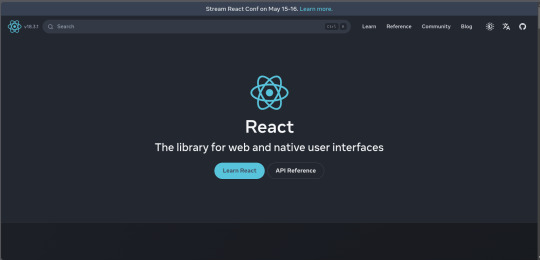
2. Angular
Angular, backed by Google, is a powerful framework for building dynamic single-page applications (SPAs).
Why Choose Angular?
Two-Way Data Binding: Synchronizes data between the model and the view.
Dependency Injection: Improves code maintainability and testability.
Comprehensive Documentation: Extensive resources for learning and troubleshooting.
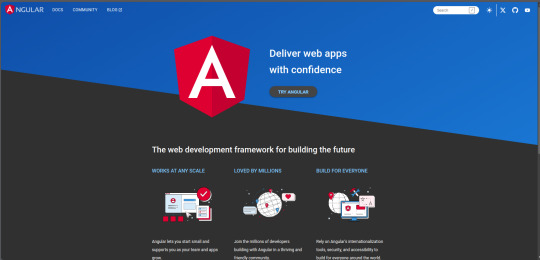
3. Vue.js
Vue.js has gained popularity due to its gentle learning curve and versatility.
Advantages of Vue.js
Reactive Data Binding: Simplifies state management.
Single-File Components: Encapsulate HTML, CSS, and JavaScript in one file.
Flexibility: Can be used for both large-scale and small-scale applications.
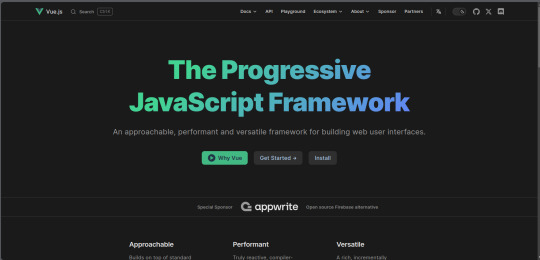
4. Svelte
Svelte is a relatively new player that compiles components into highly efficient vanilla JavaScript at build time.
Svelte’s Standout Features
No Virtual DOM: Directly manipulates the DOM for better performance.
Less Boilerplate: Cleaner code with minimal overhead.
Ease of Use: Intuitive and straightforward syntax.
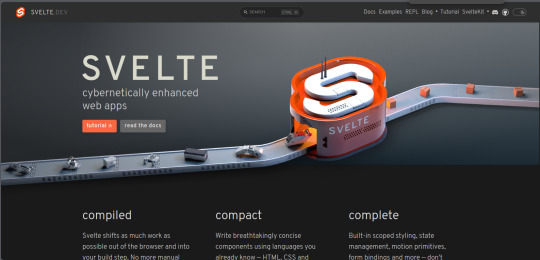
5. Bootstrap
Bootstrap is a front-end framework that provides pre-designed components and a responsive grid system.
Benefits of Using Bootstrap
Responsive Design: Ensures your site looks great on all devices.
Pre-Styled Components: Saves time with ready-to-use UI elements.
Customizable: Easily customize with Sass variables and Bootstrap’s extensive options.
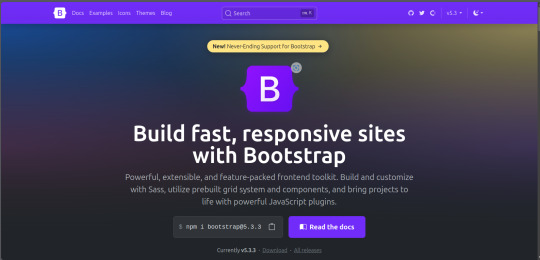
6. Tailwind CSS
Tailwind CSS is a utility-first CSS framework that allows for rapid UI development.
Tailwind CSS Features
Utility-First Approach: Use utility classes directly in your HTML.
Customizable: Extensive configuration options to suit your project’s needs.
Consistency: Enforces a consistent design language across your project.
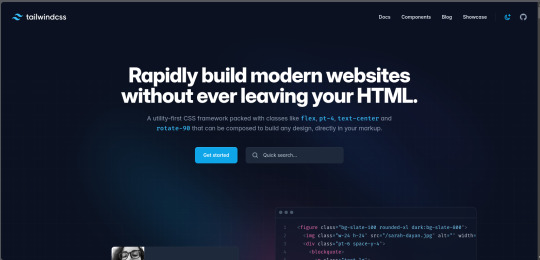
7. Ember.js
Ember.js is a robust framework for building ambitious web applications.
Why Ember.js Stands Out
Convention over Configuration: Reduces the amount of decision-making and boilerplate code.
Strong Routing: Powerful routing capabilities for managing application state.
Productivity: Focuses on developer productivity with built-in best practices.
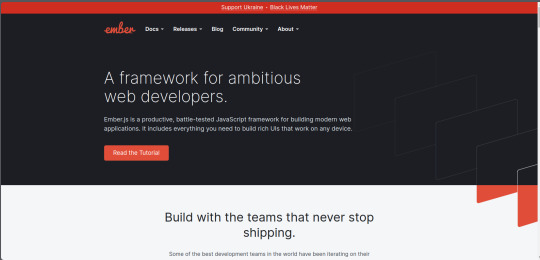
8. Alpine.js
Alpine.js offers a minimal and lightweight way to add interactivity to your websites.
Key Features of Alpine.js
Lightweight: Small footprint with only a few kilobytes.
Declarative Syntax: Similar to Vue.js, making it easy to understand and implement.
Ease of Integration: Can be easily integrated into existing projects.
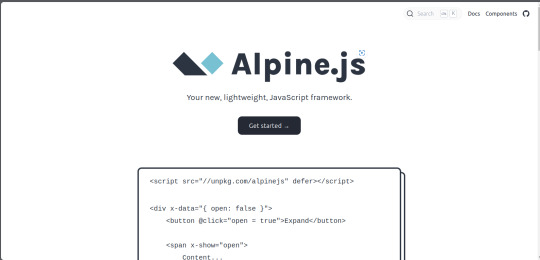
9. Next.js
Next.js is a popular React framework that enables server-side rendering and static site generation.
Benefits of Using Next.js
Server-Side Rendering (SSR): Improves performance and SEO by rendering pages on the server.
Static Site Generation (SSG): Pre-renders pages at build time for fast load times.
API Routes: Allows you to create API endpoints within your application.
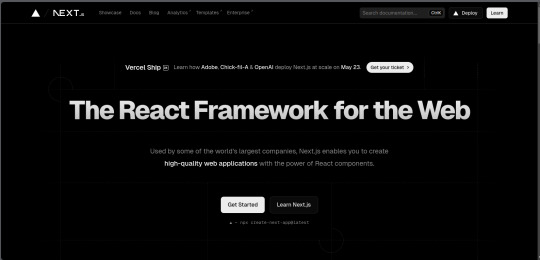
10. Lit
Lit is a simple library for building fast, lightweight web components.
Advantages of Lit
Web Components: Embraces the web components standard for reusable, encapsulated HTML elements.
Performance: Lightweight and highly performant.
Simple API: Easy to learn and use with a minimal API surface.
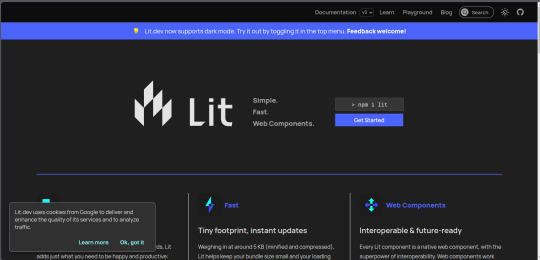
Conclusion
Choosing the right front-end framework or library can significantly impact your workflow and the quality of your projects. Whether you prefer the flexibility of React, the structure of Angular, or the simplicity of Svelte, there's a tool out there to suit your needs.
Final Tips for Selecting a Framework or Library
Project Requirements: Consider the specific needs of your project.
Community and Support: Look for frameworks with strong community support and documentation.
Learning Curve: Choose a tool that matches your current skill level and the time you have available to learn.
By staying informed about the latest tools and trends, you can ensure that your skills remain relevant and that you can deliver the best possible results in your projects. Happy coding!
Remember, the best tool is the one that helps you get the job done efficiently and effectively. So, dive into these frameworks and libraries, and take your front-end development skills to the next level!
Share Your Thoughts
I'm curious to know your thoughts on these front-end frameworks and libraries. Have you used any of them in your projects? Which one is your favorite, and why? Share your experiences and insights in the comments below.👇
2 notes
·
View notes
Text
Exploring the Powerhouse: 30 Must-Know JavaScript Libraries and Frameworks for Web Development
React.js: A declarative, efficient, and flexible JavaScript library for building user interfaces.
Angular.js (Angular): A web application framework maintained by Google, used for building dynamic, single-page web applications.
Vue.js: A progressive JavaScript framework for building user interfaces. It is incrementally adaptable and can be integrated into other projects.
Node.js: A JavaScript runtime built on Chrome's V8 JavaScript engine that enables server-side JavaScript development.
Express.js: A web application framework for Node.js that simplifies the process of building web applications.
jQuery: A fast, small, and feature-rich JavaScript library that simplifies HTML document traversal and manipulation, event handling, and animation.
D3.js: A powerful library for creating data visualizations using HTML, SVG, and CSS.
Three.js: A cross-browser JavaScript library and application programming interface (API) used to create and display animated 3D computer graphics in a web browser.
Redux: A predictable state container for JavaScript apps, often used with React for managing the state of the application.
Next.js: A React framework for building server-side rendered and statically generated web applications.
Svelte: A radical new approach to building user interfaces. It shifts the work from the browser to the build step, resulting in smaller, faster applications.
Electron: A framework for building cross-platform desktop applications using web technologies such as HTML, CSS, and JavaScript.
RxJS: A library for reactive programming using Observables, making it easier to compose asynchronous or callback-based code.
Webpack: A module bundler for JavaScript applications. It takes modules with dependencies and generates static assets representing those modules.
Babel: A JavaScript compiler that allows developers to use the latest ECMAScript features by transforming them into browser-compatible JavaScript.
Jest: A JavaScript testing framework designed to ensure the correctness of your code.
Mocha: A feature-rich JavaScript test framework running on Node.js and in the browser.
Chai: A BDD/TDD assertion library for Node.js and the browser that can be paired with any testing framework.
Lodash: A modern JavaScript utility library delivering modularity, performance, and extras.
Socket.io: A library that enables real-time, bidirectional, and event-based communication between web clients and servers.
GraphQL: A query language for APIs and a runtime for executing those queries with your existing data.
Axios: A promise-based HTTP client for the browser and Node.js, making it easy to send asynchronous HTTP requests.
Jasmine: A behavior-driven development framework for testing JavaScript code.
Meteor.js: A full-stack JavaScript platform for developing modern web and mobile applications.
Gatsby.js: A modern website framework that builds performance into every website by leveraging the latest web technologies.
Chart.js: A simple yet flexible JavaScript charting library for designers and developers.
Ember.js: A JavaScript framework for building web applications, with a focus on productivity and convention over configuration.
Nuxt.js: A framework for creating Vue.js applications with server-side rendering and routing.
Grunt: A JavaScript task runner that automates common tasks in the development process.
Sass (Syntactically Awesome Stylesheets): A CSS preprocessor that helps you write maintainable, scalable, and modular styles.
Remember to check each library or framework's documentation and community support for the latest information and updates.
4 notes
·
View notes
Text
Unveiling the Ultimate Handbook for Aspiring Full Stack Developers
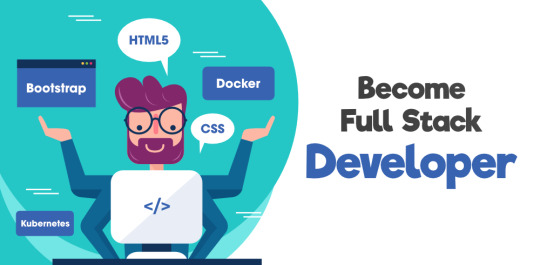
In the ever-evolving realm of technology, the role of a full-stack developer has undeniably gained prominence. Full-stack developers epitomize versatility and are an indispensable asset to any enterprise or endeavor. They wield a comprehensive array of competencies that empower them to navigate the intricate landscape of both front-end and back-end web development. In this exhaustive compendium, we shall delve into the intricacies of transforming into a proficient full-stack developer, dissecting the requisite skills, indispensable tools, and strategies for excellence in this domain.
Deciphering the Full Stack Developer Persona
A full-stack developer stands as a connoisseur of both front-end and back-end web development. Their mastery extends across the entire spectrum of web development, rendering them highly coveted entities within the tech sector. The front end of a website is the facet accessible to users, while the back end operates stealthily behind the scenes, handling the intricacies of databases and server management. You can learn it from Uncodemy which is the Best Full stack Developer Institute in Delhi.
The Requisite Competencies
To embark on a successful journey as a full-stack developer, one must amass a diverse skill set. These proficiencies can be broadly categorized into front-end and back-end development, coupled with other quintessential talents:
Front-End Development
Markup Linguistics and Style Sheets: Cultivating an in-depth grasp of markup linguistics and style sheets like HTML and CSS is fundamental to crafting visually captivating and responsive user interfaces.
JavaScript Mastery: JavaScript constitutes the linchpin of front-end development. Proficiency in this language is the linchpin for crafting dynamic web applications.
Frameworks and Libraries: Familiarization with popular front-end frameworks and libraries such as React, Angular, and Vue.js is indispensable as they streamline the development process and elevate the user experience.
Back-End Development
Server-Side Linguistics: Proficiency in server-side languages like Node.js, Python, Ruby, or Java is imperative as these languages fuel the back-end functionalities of websites.
Database Dexterity: Acquiring proficiency in the manipulation of databases, including SQL and NoSQL variants like MySQL, PostgreSQL, and MongoDB, is paramount.
API Expertise: Comprehending the creation and consumption of APIs is essential, serving as the conduit for data interchange between the front-end and back-end facets.
Supplementary Competencies
Version Control Proficiency: Mastery in version control systems such as Git assumes monumental significance for collaborative code management.
Embracing DevOps: Familiarity with DevOps practices is instrumental in automating and streamlining the development and deployment processes.
Problem-Solving Prowess: Full-stack developers necessitate robust problem-solving acumen to diagnose issues and optimize code for enhanced efficiency.
The Instruments of the Craft
Full-stack developers wield an arsenal of tools and technologies to conceive, validate, and deploy web applications. The following are indispensable tools that merit assimilation:
Integrated Development Environments (IDEs)
Visual Studio Code: This open-source code editor, hailed for its customizability, enjoys widespread adoption within the development fraternity.
Sublime Text: A lightweight and efficient code editor replete with an extensive repository of extensions.
Version Control
Git: As the preeminent version control system, Git is indispensable for tracking code modifications and facilitating collaborative efforts.
GitHub: A web-based platform dedicated to hosting Git repositories and fostering collaboration among developers.
Front-End Frameworks
React A potent JavaScript library for crafting user interfaces with finesse.
Angular: A comprehensive front-end framework catering to the construction of dynamic web applications.
Back-End Technologies
Node.js: A favored server-side runtime that facilitates the development of scalable, high-performance applications.
Express.js: A web application framework tailor-made for Node.js, simplifying back-end development endeavors.
Databases
MongoDB: A NoSQL database perfectly suited for managing copious amounts of unstructured data.
PostgreSQL: A potent open-source relational database management system.
Elevating Your Proficiency as a Full-Stack Developer
True excellence as a full-stack developer transcends mere technical acumen. Here are some strategies to help you distinguish yourself in this competitive sphere:
Continual Learning: Given the rapid evolution of technology, it's imperative to remain abreast of the latest trends and tools.
Embark on Personal Projects: Forge your path by creating bespoke web applications to showcase your skills and amass a portfolio.
Collaboration and Networking: Participation in developer communities, attendance at conferences, and collaborative ventures with fellow professionals are key to growth.
A Problem-Solving Mindset: Cultivate a robust ability to navigate complex challenges and optimize code for enhanced efficiency.
Embracing Soft Skills: Effective communication, collaborative teamwork, and adaptability are indispensable in a professional milieu.
In Closing
Becoming a full-stack developer is a gratifying odyssey that demands unwavering dedication and a resolute commitment to perpetual learning. Armed with the right skill set, tools, and mindset, one can truly shine in this dynamic domain. Full-stack developers are in high demand, and as you embark on this voyage, you'll discover a plethora of opportunities beckoning you.
So, if you aspire to join the echelons of full-stack developers and etch your name in the annals of the tech world, commence your journey by honing your skills and laying a robust foundation in both front-end and back-end development. Your odyssey to becoming an adept full-stack developer commences now.
5 notes
·
View notes
Text
Full-Stack Web Development In 7 days Ebook
Title: Full-Stack Web Development in 7 Days: Your Comprehensive Guide to Building Dynamic Websites
Introduction: Are you eager to embark on a journey to become a full-stack web developer? Look no further! In this comprehensive ebook, "Full-Stack Web Development in 7 Days," we will guide you through the fundamental concepts and practical skills necessary to build dynamic websites from front to back. Whether you're a beginner or an experienced programmer looking to expand your skill set, this guide will equip you with the knowledge and tools to kickstart your journey as a full-stack web developer in just one week.
Day 1: Introduction to Web Development:
Understand the foundations of web development, including the client-server architecture and HTTP protocol.
Learn HTML, CSS, and JavaScript—the building blocks of any web application.
Dive into the basics of responsive web design and create your first static webpage.
Day 2: Front-End Development:
Explore the world of front-end development frameworks like Bootstrap and learn how to build responsive and visually appealing user interfaces.
Master JavaScript libraries such as jQuery to add interactivity and dynamic elements to your web pages.
Gain hands-on experience with front-end frameworks like React or Angular to create robust single-page applications.
Day 3: Back-End Development:
Discover the essentials of back-end development using popular programming languages like Python, JavaScript (Node.js), or Ruby.
Learn about server-side frameworks such as Express, Django, or Ruby on Rails to build powerful back-end applications.
Connect your front-end and back-end components, enabling them to communicate and exchange data seamlessly.
Day 4: Databases and Data Management:
Dive into the world of databases and understand the difference between relational and NoSQL databases.
Learn how to work with popular databases like MySQL, PostgreSQL, or MongoDB.
Implement database integration into your web applications, enabling data storage, retrieval, and manipulation.
Day 5: API Development and Integration:
Explore the fundamentals of RESTful APIs and their role in modern web development.
Build your own APIs using frameworks like Express or Flask to expose data and functionality to external applications.
Integrate third-party APIs, such as social media APIs or payment gateways, to enhance the functionality of your web applications.
Day 6: Security and Performance Optimization:
Understand common security vulnerabilities in web applications and learn how to protect against them.
Implement authentication and authorization mechanisms to secure user data and control access.
Optimize your web applications for performance, including techniques like caching, code minification, and server-side rendering.
Day 7: Deployment and Continuous Integration:
Learn how to deploy your web applications to a hosting platform or a cloud infrastructure like AWS, Azure, or Heroku.
Set up continuous integration and deployment workflows using tools like Git, GitHub, and Docker.
Finalize your full-stack web development journey by exploring best practices for maintenance, troubleshooting, and scalability.
Conclusion: "Full-Stack Web Development in 7 Days" provides a structured and comprehensive roadmap to help you become a proficient full-stack web developer within a week. By following this ebook, you will gain a solid foundation in front-end and back-end development, databases, APIs, security, performance optimization, and deployment. Get ready to unleash your creativity and embark on an exciting career in web development. Start your journey today and unlock the endless possibilities of building dynamic and interactive websites.
2 notes
·
View notes
Text
The Future of Full-Stack Web Development: Trends, Tools, and Technologies to Watch
In the ever-evolving world of tech, few areas have seen as much rapid growth and transformation as full stack web development. What used to be a clear separation between frontend and backend has now turned into a more seamless, hybrid model, where developers are expected to juggle both ends of the spectrum. But where is this all heading?
As we look into the future of full-stack web development, it's clear that exciting changes are on the horizon — from smarter tools and frameworks to revolutionary technologies that promise to redefine how we build for the web. If you're a developer, student, or tech enthusiast, it's time to pay attention.
What is Full Stack Web Development?
Before diving into future trends, let’s briefly revisit what full stack web development really means. A full stack developer works on both:
Frontend (client-side): Everything users interact with — HTML, CSS, JavaScript, and UI frameworks like React or Vue.js.
Backend (server-side): Databases, servers, APIs, and the business logic behind the scenes using technologies like Node.js, Python, Ruby, or Java.
A full stack developer is essentially a digital Swiss Army knife — versatile, adaptable, and always in demand.
Emerging Trends in Full Stack Web Development
Here’s what’s shaping the future:
1. The Rise of Jamstack
Jamstack (JavaScript, APIs, and Markup) is becoming the preferred architecture for faster, more secure, and scalable web applications. Unlike traditional stacks, Jamstack decouples the frontend from the backend, improving performance and simplifying development.
2. AI-Powered Development Tools
Artificial Intelligence is now making its way into code editors and development platforms. Think GitHub Copilot or ChatGPT. These tools assist in writing code, identifying bugs, and even generating entire functions — speeding up the full stack workflow.
Benefits:
Faster coding with AI suggestions
Error prediction and debugging assistance
Smart documentation generation
3. Serverless and Edge Computing
Forget managing traditional servers — serverless architectures and edge computing are becoming the new standard. They allow developers to deploy applications with minimal infrastructure concerns, focusing purely on code and performance.
4. Component-Based Development
Modern frontend frameworks like React, Angular, and Vue are pushing developers towards building reusable components. This modular approach is now extending into the backend too, creating consistent development patterns across the stack.
Tools to Watch in Full Stack Development
To stay relevant, developers must keep their toolkits updated. Here are some must-watch tools shaping the future:
Frontend Tools
React (with Next.js) – For server-side rendering and static generation
Svelte – Lightweight and highly efficient for reactive apps
Tailwind CSS – Utility-first CSS framework for rapid UI development
Backend Tools
Node.js – Continues to dominate with asynchronous performance
Deno – A secure runtime from Node.js’s creator
GraphQL – Replacing REST APIs with a more flexible query language
DevOps & Hosting
Vercel & Netlify – Leading platforms for seamless frontend deployment
Docker & Kubernetes – For containerization and orchestration
Firebase & Supabase – Backend-as-a-service options for fast prototyping
Key Technologies Shaping the Future
Let’s look at the bigger innovations redefining full stack web development:
WebAssembly (WASM): Bringing languages like C++ and Rust to the web browser
Progressive Web Apps (PWAs): Combining web and native app experiences
Blockchain Integration: Decentralized apps (dApps) and smart contract backends
Real-Time Web with WebSockets & MQTT: Enabling live updates and chats
The Human Side of Full Stack Development
Beyond the code and tools, the role of a full stack developer is evolving on a human level too.
Collaborative Skills: Developers must now work more closely with designers, DevOps, and data teams.
Soft Skills Matter: Communication, problem-solving, and adaptability are becoming just as crucial as technical expertise.
Lifelong Learning: With new frameworks emerging almost monthly, continuous learning is a non-negotiable part of the job.
Final Thoughts
Full stack web development is no longer just about knowing a few languages. It’s about understanding entire ecosystems, embracing new paradigms, and building applications that are fast, scalable, and user-centric.
As we look to the future, the lines between frontend and backend will continue to blur, AI will become a coding partner, and developers will be more empowered than ever before. Staying curious, adaptable, and open to learning will be the key to thriving in this dynamic field.
In summary, here’s what to watch for in full stack web development:
Greater automation through AI tools
Continued growth of Jamstack and serverless models
Wider adoption of real-time, decentralized, and modular systems
The rise of multi-disciplinary developer roles
The future is full of possibilities — and if you’re a developer today, you’re right at the center of this exciting evolution.
0 notes
Text
Common Mistakes to Avoid in JavaScript Development
JavaScript is a powerful yet flexible language, which can sometimes lead to subtle bugs and performance issues if not used correctly. Whether you're a developer or a business looking to hire JavaScript development companies in USA, understanding these common pitfalls can help ensure high-quality, maintainable, and efficient code.
1. Not Using Strict Mode
'use strict'; helps catch silent errors by enforcing stricter parsing and error handling. Many top JavaScript development companies in USA enforce strict mode to avoid:
Accidental global variables (missing var, let, or const)
Duplicate parameter names
Deleting undeletable properties
Solution: Always enable strict mode at the top of scripts or functions.
2. Ignoring Asynchronous Behavior
JavaScript’s non-blocking nature can lead to unexpected behavior if not handled properly:
Callback Hell: Nested callbacks make code unreadable.
Unhandled Promises: Forgetting .catch() in promises can hide errors.
Race Conditions: Async operations completing out of expected order.
Solution: Use async/await or Promises with proper error handling.
3. Memory Leaks
Poor memory management can slow down applications over time. Common causes:
Unreleased Event Listeners (not removing them when no longer needed)
Global Variables (accidentally storing large data in global scope)
Closures holding references unnecessarily
Solution: Use browser DevTools to monitor memory usage and clean up resources.
4. Improper Variable Scoping
Using var instead of let or const can lead to:
Hoisting issues (variables being accessible before declaration)
Block-scope confusion (variables leaking outside loops/conditionals)
Solution: Prefer const for constants and let for block-scoped variables.
5. Not Handling Errors Gracefully
Failing to implement proper error handling leads to crashes and poor UX. Common mistakes:
Silent Failures (ignoring try-catch in async operations)
Generic Error Messages (not logging meaningful debug info)
Solution: Use structured error handling and logging (e.g., Sentry, Winston).
6. Overlooking Cross-Browser Compatibility
Not all browsers support the latest JavaScript features. Issues include:
Missing polyfills for modern ES6+ features
Inconsistent API support (e.g., fetch in older browsers)
Solution: Use Babel for transpilation and feature detection instead of browser sniffing.
7. Poor Performance Optimization
JavaScript can become sluggish if not optimized:
Excessive DOM Manipulation (causing reflows/repaints)
Blocking the Event Loop (long-running synchronous tasks)
Inefficient Loops (using forEach when for...of or while is better)
Solution: Use debouncing/throttling for events and Web Workers for CPU-heavy tasks.
8. Not Testing Thoroughly
Skipping tests leads to bugs in production. Common gaps:
No Unit Tests (using Jest, Mocha)
Missing Edge Cases (unhandled null/undefined inputs)
No End-to-End Testing (Cypress, Playwright)
Solution: Leading JavaScript development companies in USA enforce test-driven development (TDD) for reliability.
9. Security Vulnerabilities
JavaScript apps are prone to attacks if not secured:
XSS (Cross-Site Scripting) – Sanitize user inputs with DOMPurify.
CSRF (Cross-Site Request Forgery) – Use anti-CSRF tokens.
Insecure Dependencies – Regularly audit packages with npm audit.
Solution: Follow OWASP guidelines and conduct security audits.
10. Choosing the Wrong Framework/Library
Not every project needs React, Angular, or Vue. Mistakes include:
Over-engineering (using a heavy framework for a simple site)
Ignoring SSR (Server-Side Rendering) leading to poor SEO
Solution: Evaluate project needs before selecting a tech stack.
Why Partner with Top JavaScript Development Companies in USA?
Avoiding these mistakes requires expertise. The best JavaScript development companies in USA follow: ✔ Best practices in coding standards ✔ Performance optimization techniques ✔ Security-first development ✔ Comprehensive testing strategies
By being aware of these pitfalls and working with experienced developers, you can build robust, scalable, and high-performing JavaScript applications.
0 notes
Text
MEAN Stack Development:
A Comprehensive Guide for Modern Web Applications
In the fast-evolving world of web development, technology stacks play a critical role in building robust, scalable, and maintainable applications. One of the most popular and powerful technology stacks for building full-stack JavaScript applications is the MEAN Stack. Composed of MongoDB, Express.js, Angular, and Node.js, MEAN provides developers with a consistent and efficient platform to create dynamic web applications.
In this blog post, we will explore what the MEAN stack is, why it’s so popular, and how each component contributes to the development process. We’ll also look at the benefits, use cases, and a step-by-step guide to getting started with MEAN stack development.
What is the MEAN Stack?

The MEAN stack is a JavaScript-based framework for building full-stack web applications. Each letter in the acronym stands for a technology in the stack:
M: MongoDB — A NoSQL database that stores data in JSON-like documents.
E: Express.js — A lightweight and flexible Node.js web application framework.
A: Angular — A front-end framework developed by Google for building dynamic client-side applications.
N: Node.js — A server-side JavaScript runtime built on Chrome’s V8 JavaScript engine.
These technologies work together seamlessly, allowing developers to use JavaScript throughout the entire application — from the client-side to the server-side and database.
Why Choose the MEAN Stack?
The MEAN stack offers numerous advantages, making it a top choice for startups, enterprises, and freelance developers alike:
1. Full-Stack JavaScript
Since all technologies in the MEAN stack use JavaScript, developers can write both client-side and server-side code using the same language. This streamlines development, enhances productivity, and reduces the need for multiple language specialists.
2. Open Source and Community-Driven
Each component of the MEAN stack is open-source and supported by large communities. This means developers can access extensive documentation, tutorials, libraries, and forums for troubleshooting.
3. MVC Architecture
The MEAN stack follows the Model-View-Controller (MVC) pattern, which promotes organized and maintainable code structure.
4. Scalability and Performance
With Node.js’s event-driven architecture and MongoDB’s flexible schema, MEAN-based applications are highly scalable and capable of handling large amounts of data and traffic.
5. Cloud Compatibility
MongoDB is well-suited for cloud-based applications, making it easy to host and scale in cloud environments like AWS, Azure, or Google Cloud.
Explore More Knowledge about it
Deep Dive into MEAN Stack Components
1. MongoDB — The Database Layer

MongoDB is a NoSQL database that stores data in BSON (Binary JSON) format. It offers a flexible schema design, horizontal scaling, and high performance.
Key Features:
Document-based storage.
Schema-less data model.
Rich query language.
Easy integration with Node.js via libraries like Mongoose.
MongoDB is ideal for applications with evolving data structures or those requiring real-time analytics.
2. Express.js — The Server-Side Framework

Express.js is a minimalist web framework for Node.js. It simplifies routing, middleware integration, and request/response handling.
Key Features:
Middleware-based architecture.
RESTful API support.
Lightweight and fast.
Simplifies error handling and routing logic.
Express acts as the backend framework, handling business logic, APIs, and server-side rendering (when necessary).
3. Angular — The Front-End Framework

Angular, developed by Google, is a powerful front-end framework used to build��Single Page Applications (SPAs) with rich user interfaces.
Key Features:
Two-way data binding.
Component-based architecture.
Dependency injection.
Built-in tools for HTTP, forms, routing, and testing.
Angular brings dynamic, interactive elements to your web app, improving user experience.
4. Node.js — The Runtime Environment

Node.js allows JavaScript to run on the server-side. It uses a non-blocking, event-driven architecture, making it lightweight and efficient for I/O-heavy tasks.
Key Features:
Built on Chrome’s V8 engine.
Asynchronous and event-driven.
NPM (Node Package Manager) provides access to thousands of packages.
Ideal for real-time applications like chat apps and streaming services.
Node.js ties the stack together, serving as the core runtime for Express and integrating with MongoDB seamlessly.
MEAN Stack Architecture
A typical MEAN application consists of the following workflow:
Client Layer (Angular): The user interacts with the app via the Angular front end.
Server Layer (Express + Node.js): Angular sends HTTP requests to Express routes.
Database Layer (MongoDB): Express interacts with MongoDB to read/write data.
Response: Data is sent back through Express to Angular for rendering on the client side.
This end-to-end process runs entirely on JavaScript, providing consistency and faster development cycles.
Use Cases of MEAN Stack
MEAN stack is versatile and can be used to build a variety of applications:
Single Page Applications (SPAs)
Real-time Chat Applications
E-commerce Platforms
Content Management Systems (CMS)
Project Management Tools
Social Media Applications
Online Learning Platforms
0 notes
Text
10 Smart Reasons to Hire JavaScript Developer for Your Next Project in 2025
If you're planning to launch a new digital product in 2025 be it a website, web app, or mobile application you’re probably wondering which technology and developer you should go with. Here's the good news: JavaScript continues to dominate the development world. And one of the smartest moves you can make this year is to hire a JavaScript developer for your next project.
JavaScript is no longer just a frontend language. It’s evolved into a full ecosystem that supports everything from user interfaces to server-side programming. Let's explore 10 reasons why hiring a JavaScript expert is a smart investment for your business in 2025.

1. JavaScript Powers the Modern Web
From Facebook to Netflix to LinkedIn JavaScript is the foundation of today’s biggest platforms. It’s the backbone of interactive web and mobile experiences. When you hire a JavaScript developer, you're choosing a language that's proven, reliable, and scalable for projects of any size.
2. Fast Development with One Language
JavaScript is used on both the frontend (React, Vue.js) and backend (Node.js). This means your entire project can be built with one language. A full-stack JavaScript developer can speed up delivery, reduce communication issues, and keep the codebase clean and unified.
3. Huge Library of Tools & Frameworks
React, Angular, Vue, Node.js, Express, Next.js the list goes on. JavaScript’s massive ecosystem lets developers work faster and smarter. You don’t have to reinvent the wheel. A good developer knows how to pick the right tool for the job, saving time and boosting performance.
4. Highly Scalable for Growing Projects
Whether you're starting with an MVP or building an enterprise-level product, JavaScript can scale with your growth. When you hire a JavaScript developer, you’re not limited by tech you're empowered by it.
5. Great for Mobile and Web Apps
Want a responsive website and a mobile app with one codebase? JavaScript frameworks like React Native make it possible. You can target both iOS and Android users without hiring two separate teams.
6. Improved User Experience
JavaScript enables real-time updates, animations, and dynamic content things that make your app feel modern and smooth. A skilled developer can bring your design to life and create a seamless experience for your users.
7. Massive Developer Community
With millions of developers using JavaScript, community support is huge. This means faster troubleshooting, continuous learning, and access to pre-built solutions. When challenges come up, a well-connected JavaScript developer can find answers quickly.
8. Better SEO with Server-Side Rendering
Think JavaScript can’t do SEO? Think again. Tools like Next.js allow developers to render content on the server, making pages faster and more search engine-friendly. A smart JavaScript developer can help your site rank better on Google.
9. Cost-Effective Development
Because JavaScript is so versatile, you can often reduce the size of your development team. Instead of hiring separate developers for frontend, backend, and mobile you can streamline your team with JavaScript specialists, saving both time and money.
10. Future-Proof Technology
JavaScript is not a trend, it's the future. Big tech companies continue to invest in its growth. By choosing to hire a JavaScript developer now, you’re building your project on a solid, future-ready foundation.
FAQs
Q1. Why should I hire a JavaScript developer instead of other developers? JavaScript developers can work across the full stack frontend, backend, and even mobile. This reduces complexity, lowers costs, and speeds up development.
Q2. Can a JavaScript developer handle my mobile app too? Yes! With frameworks like React Native, a JavaScript developer can build powerful mobile apps for both iOS and Android using the same codebase.
Q3. How do I choose the right JavaScript developer for my project? Look for experience with modern frameworks (React, Node.js, etc.), strong problem-solving skills, a portfolio of past work, and good communication abilities.
Conclusion
2025 is all about smarter, faster, and more efficient digital solutions and JavaScript is leading the charge. From web to mobile, frontend to backend, JavaScript can handle it all. So if you're ready to build a high-performance, scalable product, the smart move is simple: hire JavaScript developer and bring your vision to life.
0 notes
Text
Server Side Rendering vs Client Side Rendering
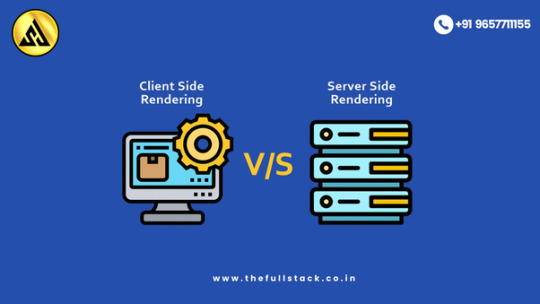
Server Side Rendering (SSR) and Client Side Rendering (CSR) are two popular techniques in modern web development for delivering dynamic content to users. SSR involves rendering web pages on the server before sending them to the browser, offering faster initial load times and improved SEO performance. It's commonly used with frameworks like Next.js and Nuxt.js for optimized web applications. On the other hand, CSR renders content directly in the browser using JavaScript, providing smoother user interactions and faster subsequent page loads. Frameworks like React, Angular, and Vue.js often use CSR to build single-page applications (SPAs). Choosing between SSR and CSR depends on your app’s goals—SSR is ideal for SEO-driven websites, while CSR excels in interactive user experiences.
0 notes
Text
React vs. Other Frameworks: Why Developers Prefer React
Introduction to React Popularity
In recent years, React has become the go-to framework for web developers across the globe. Whether building dynamic user interfaces or crafting responsive web applications, React consistently stands out. Many aspiring developers looking for the best React training in Hyderabad often begin their journey by understanding why React holds such a strong position in the industry.
Component-Based Architecture
Component-based structure is one of the biggest advantages of React.This allows developers to break down complex UIs into smaller, reusable pieces, making both development and maintenance easier. Other frameworks like Angular and Vue offer similar capabilities, but React’s simplicity and flexibility make it particularly appealing.
Strong Community Support and Ecosystem
The React framework is backed by Meta (formerly Facebook), and there is a massive global community involved with it.This ensures regular updates, extensive libraries, and a wealth of tutorials and tools that make development faster and more efficient. Compared to lesser-known frameworks, React provides a more reliable and scalable ecosystem.
Performance and SEO Benefits
React's virtual DOM optimizes rendering and improves performance, especially for dynamic applications. Additionally, with server-side rendering (using tools like Next.js), React can be SEO-friendly—an edge over some other frameworks that struggle with search engine visibility.
Conclusion
Choosing the right framework depends on your project needs, but React’s ease of use, performance, and support make it a top choice for modern developers. If you're ready to kick-start your journey with the most in-demand skills, consider enrolling at SSSIT Computer Education, known for offering expert-led, hands-on React training that prepares you for real-world success.
#best react training in Hyderabad#best react training in kukatpally#best react training in KPHB#best react training institute in Hyderabad
0 notes
Photo

New Post has been published on https://codebriefly.com/real-world-projects-and-use-cases-with-angular-19/
Real-World Projects and Use Cases with Angular 19

Angular 19 is a powerful framework that continues to be a popular choice for building dynamic, scalable, and responsive web applications. Whether you are working on an enterprise-grade platform or a personal project, Angular 19 offers the tools and features needed to build high-performance applications. In this blog, we will explore some real-world projects and use cases to understand how Angular 19 can be utilized effectively.
Table of Contents
Toggle
Why Choose Angular 19 for Real-World Projects?
Popular Real-World Projects Built with Angular
Use Case 1: Real-Time Data Dashboards
Key Features:
Example Code:
Use Case 2: E-Commerce Applications
Key Features:
Example Library:
Use Case 3: Progressive Web Applications (PWAs)
Key Features:
How to Set Up PWA Support:
Best Practices for Real-World Angular Projects
Final Thoughts
Why Choose Angular 19 for Real-World Projects?
Angular 19 comes with several improvements that make it ideal for real-world applications. These include enhanced performance, robust state management, and a modular architecture. Choosing Angular 19 ensures scalability, maintainability, and optimal performance, making it the go-to framework for large-scale and enterprise applications.
Popular Real-World Projects Built with Angular
Enterprise Dashboards and Admin Panels
Angular 19’s modular structure and built-in RxJS support make it perfect for dashboards.
Real-time data handling with WebSockets and reactive programming.
Example: Google Analytics Dashboard
E-Commerce Platforms
Dynamic UI/UX with Angular Material and seamless state management with NgRx.
Real-time inventory updates and interactive checkout experiences.
Example: IKEA’s in-store digital catalog, internal dashboards at Deutsche Bank and Forbes
Content Management Systems (CMS)
Powerful routing and navigation for dynamic content loading.
Example: Contentful CMS with Angular Frontend
Single Page Applications (SPAs)
Enhanced routing and state management.
High performance with Ahead-of-Time (AOT) compilation.
Example: Weather Applications and Task Managers
Use Case 1: Real-Time Data Dashboards
Real-time dashboards are essential for monitoring business metrics and system performance. Angular 19 is ideal for creating interactive and dynamic dashboards due to its robust data binding and component-based architecture.
Key Features:
Live Data Feeds: Integrate WebSocket for live updates.
Charts and Graphs: Use libraries like Chart.js and D3.js.
Responsive Layout: Angular Material ensures mobile compatibility.
Example Code:
import Component, OnInit from '@angular/core'; import WebSocketService from './web-socket.service'; @Component( selector: 'app-dashboard', templateUrl: './dashboard.component.html' ) export class DashboardComponent implements OnInit data: any[] = []; constructor(private wsService: WebSocketService) ngOnInit(): void this.wsService.getData().subscribe((message) => this.data.push(message); );
Use Case 2: E-Commerce Applications
Angular 19’s ability to manage complex states makes it a prime choice for e-commerce apps. Using NgRx for state management allows for predictable and efficient handling of data, while Angular Universal enables server-side rendering for better SEO.
Key Features:
Product Catalog and Search Functionality
Cart and Checkout with Secure Payment Integration
User Authentication and Profile Management
Example Library:
NgRx Store: Efficient state management
Angular Universal: Improves SEO and page load speed
Use Case 3: Progressive Web Applications (PWAs)
PWAs provide a native app-like experience directly from the browser. Angular 19’s PWA support includes offline functionality and responsive layouts.
Key Features:
Offline Access: Uses Service Workers
Push Notifications: Engages users even when the app is not active
Fast Load Times: Optimized for speed
How to Set Up PWA Support:
ng add @angular/pwa
Best Practices for Real-World Angular Projects
Use Lazy Loading: Reduces initial load time by loading modules as needed.
Optimize Change Detection: Use OnPush strategy where applicable.
Implement State Management: Use NgRx for predictable state handling.
Enable Ahead-of-Time (AOT) Compilation: Reduces load time and boosts performance.
Utilize Angular Universal for SEO: Improve page speed and visibility on search engines.
Final Thoughts
Angular 19’s advanced features and robust architecture make it an ideal choice for building large-scale and performance-oriented applications. Whether it’s an e-commerce platform, real-time dashboard, or PWA, leveraging Angular 19 ensures scalability and maintainability.
Keep learning & stay safe 😉
You may like:
Testing and Debugging Angular 19 Apps
Building and Deploying Angular 19 Apps
UI/UX with Angular Material in Angular 19
Performance Optimization and Best Practices in Angular 19
0 notes
Text
JavaScript Framework Showdown: React vs. Vue vs. Angular in 2025
In the fast-paced world of web development, choosing the right JavaScript framework for your project can be a make-or-break decision. With so many options available, it’s important to understand the strengths, weaknesses, and evolving trends of the most popular frameworks: React, Vue, and Angular. As we move further into 2025, these frameworks continue to dominate the landscape, shaping the way developers build interactive, scalable, and high-performing web applications.
In this blog, we’ll dive deep into the differences between these three frameworks, and how digital marketing in the UK and web development agencies in the UK are leveraging them to create cutting-edge solutions for businesses.
React: The Industry Leader
React has been the most popular JavaScript library for building user interfaces since its release by Facebook in 2013. It introduced a new approach to web development by focusing on component-based architecture, making it easier to manage and scale large applications.
Strengths of React
Component-Based Architecture: React’s focus on reusable components allows for better maintainability, scalability, and quicker development cycles.
Rich Ecosystem: React has an extensive library of third-party tools and libraries, which makes it adaptable to a wide variety of use cases.
Strong Community and Support: With a massive community of developers and frequent updates, React offers a high level of stability and innovation.
SEO-Friendliness: Since React allows for server-side rendering (SSR), it can be optimized for search engines, making it a great choice for businesses looking to improve their visibility on search engines, an important aspect of digital marketing in the UK.
Why Choose React in 2025?
React’s dominance in the market continues as it keeps evolving with improvements in performance and new features. Many web development agencies in the UK prefer React for its flexibility, ease of integration with other platforms, and ability to handle both small-scale projects and large-scale enterprise applications.
Vue: The Rising Star
Vue, created by Evan You, has grown in popularity since its release in 2014. It is a progressive framework designed to be incrementally adoptable. Unlike Angular or React, Vue is more focused on the view layer, but it provides robust tools to build complex applications.
Strengths of Vue
Simplicity and Learning Curve: Vue is often praised for its gentle learning curve. Developers can quickly start building applications with it, making it a great choice for both beginners and experienced developers.
Flexibility: Vue is highly flexible, allowing developers to structure their projects however they see fit. It’s easy to integrate with other libraries or existing projects.
Two-Way Data Binding: Vue’s two-way data binding is similar to Angular’s, allowing for easier synchronization between the model and the view.
Performance: Vue offers high performance out-of-the-box and is lightweight compared to Angular.
Why Choose Vue in 2025?
Vue’s growth trajectory suggests that it will continue to attract attention in the coming years. Its simplicity and flexibility make it ideal for businesses that need quick development without sacrificing quality, and it’s increasingly being adopted by web development agencies in the UK for building high-performance web applications.
Angular: The Full-Featured Powerhouse
Angular, developed and maintained by Google, is a full-fledged framework designed for building large-scale, enterprise-level applications. It offers a wide range of built-in functionalities, such as dependency injection, routing, and two-way data binding, which makes it a comprehensive solution for developers.
Strengths of Angular
Comprehensive Framework: Angular comes with a wide range of built-in features, reducing the need for third-party libraries.
TypeScript Support: Angular is built using TypeScript, which offers static typing and modern JavaScript features, making it a strong choice for large-scale applications with complex codebases.
Two-Way Data Binding: Angular’s two-way data binding automatically synchronizes the model and view, reducing the need for manual DOM manipulation.
Built for Large-Scale Applications: Angular is designed for large, enterprise-level applications, making it suitable for businesses that require robust and scalable solutions.
Why Choose Angular in 2025?
Angular remains a solid choice for web development agencies in the UK that focus on large-scale projects or enterprise solutions. Its comprehensive toolset is ideal for businesses with complex requirements and long-term scalability. Additionally, Angular’s strong integration with TypeScript makes it appealing to developers who appreciate the power of type-safe code.
React vs. Vue vs. Angular: Which One Should You Choose?
Choosing the right framework depends on the specific needs of your project and the skillset of your development team. Here’s a quick comparison to help guide your decision:
React: Ideal for projects requiring flexibility, scalability, and a large ecosystem. React is a great choice for interactive UIs, single-page applications (SPAs), and SEO-optimized websites.
Vue: Best for developers looking for simplicity and ease of integration. Vue is perfect for smaller teams, rapid development, and projects that don’t require the heavy overhead of Angular.
Angular: Perfect for large-scale enterprise applications that require a comprehensive solution with built-in features. Angular is the framework of choice for businesses with complex needs and long-term scalability.
Final Thoughts —
As the digital landscape evolves, React, Vue, and Angular will continue to play a pivotal role in shaping the future of web development. Digital marketing in the UK relies heavily on seamless, high-performance websites, and the right JavaScript framework can help ensure that your website stands out. Whether you’re working with a web development agency in the UK or developing your own project, understanding the strengths of each framework will allow you to make an informed decision that best suits your needs.
In 2025, React, Vue, and Angular will continue to dominate the web development landscape, each offering unique advantages for different types of projects. By choosing the right framework, businesses can stay ahead of the competition and deliver high-quality user experiences that drive success.
#digital marketing#digital marketing solutions#united kingdom#web development#react vs angular vs vue#digital marketing company#maya
0 notes